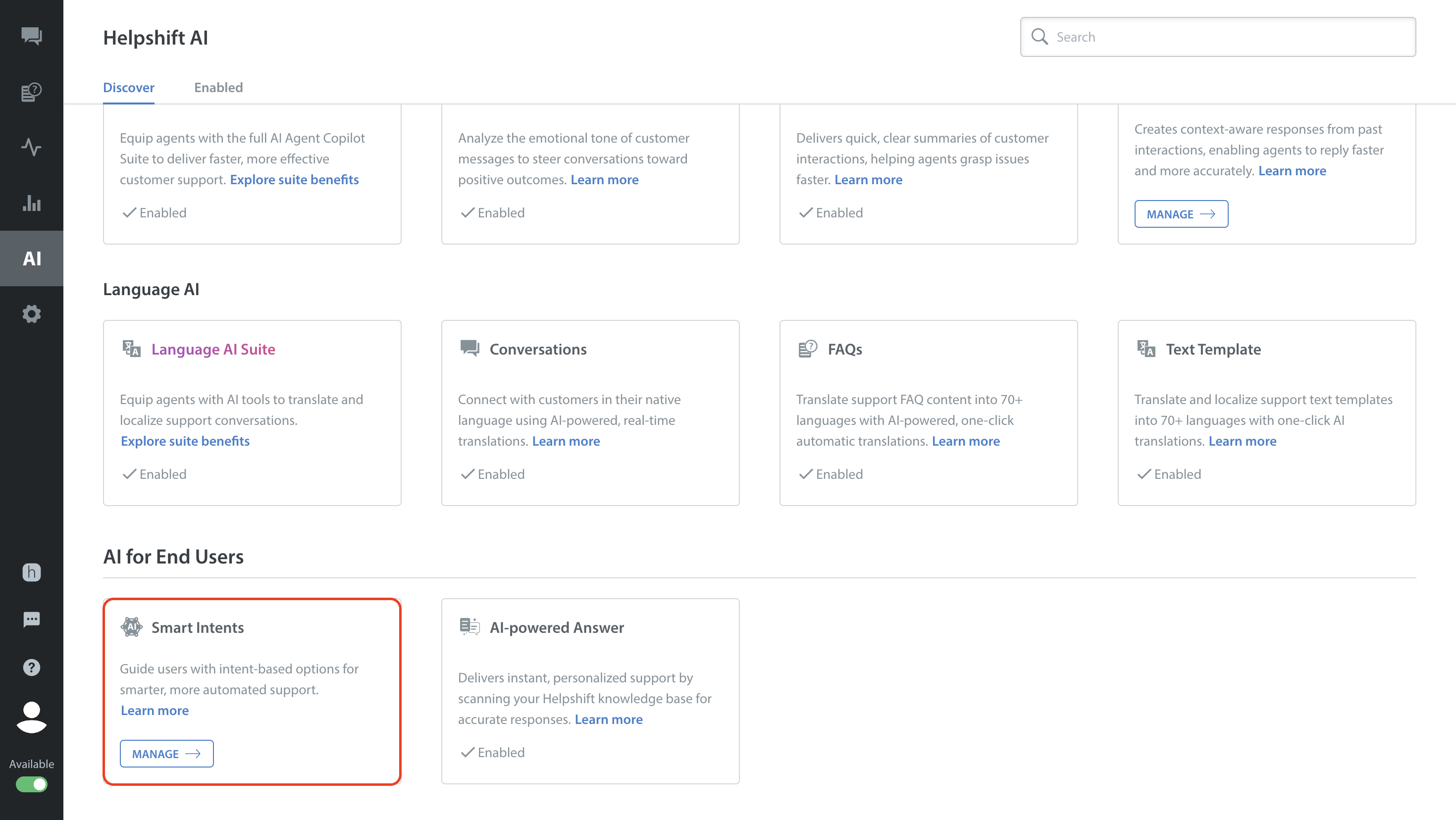- Log into your Helpshift account as an administrator.
- On the Helpshift toolbar, click the Helpshift AI button.
- On the Helpshift AI page, look for the Smart Intents card.
- Click MANAGE ➔ on the Smart Intents card.
This will open the Smart Intents page with the Intents tab active by default.
You’ll see a card for each intent group you’ve created.
- Click the More Options button (⋮) near to the + NEW INTENT GROUP button.
- From the shortcut menu, choose Export training messages to CSV.

- Your computer downloads a ZIP file that contains the CSV files in languages for which intent and intent groups are available.
- Add new rows, as needed, before entering the details for any new training samples.
- Edit any training samples that contain errors.
Do not change any intent name in the Intent column. - Save and close your work.
You must save the file in its original format: CSV. - To begin preparing your edited CSV file for upload, see Import training samples from CSV.
NOTE
Depending on your browser and its settings, you may have to approve the download.
Depending on your computer and its settings:
the ZIP archive may expand automatically.
your default spreadsheet software may open the CSV file automatically.
Otherwise, you may have to expand the downloaded ZIP archive manually, and/or open the CSV file manually.
Observe that the opened CSV file has three columns in use, where the column headings are as follows.
Do not change the column headings.
TIP
- Ensure that you attribute each new training sample to its correct intent.
Otherwise, a wrongly attributed training sample degrades the ability of Smart Intents to:- understand ambiguous end-user replies in chat.
- provide accurate intent-matching.
- Ensure that no training sample contains more than 1,000 characters, including spaces.

